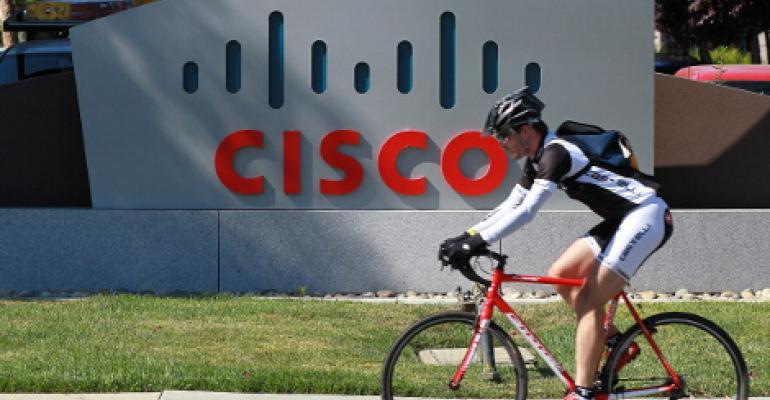(Bloomberg) -- Cisco Systems Inc., the biggest maker of the equipment that’s the backbone of the internet, projected sales and profit that indicate corporate spending on technology hardware is slowing.
Profit before certain costs in the period that ends in January will be 55 cents to 57 cents a share and revenue may decline as much as 4 percent, the company said Wednesday. Analysts projected profit of 59 cents a share and a 2 percent increase in sales to $12.1 billion, according to data compiled by Bloomberg.
The forecast signals the difficulties facing Chief Executive Officer Chuck Robbins, who is he seeking to recast Cisco as a provider of networking services amid tightening corporate purchasing. With switching and routing still providing the biggest chunk of sales, Robbins is struggling to show growth as customers move away from the mix of fixed hardware and closed software that helped the company become dominant.
“When you have more economic uncertainty enterprises tend not to spend,” said David Heger, an analyst at Edward Jones. The new businesses’ contribution is “still not big enough and the transition can’t move enough relative to the overall business.”
Cisco shares declined as much as 5.4 percent in extended trading following the announcement. The stock had gained 16 percent this year to $31.57 at the close in New York.
Orders Decline
Robbins said most of the caution in Cisco’s forecast comes from weak orders from telecommunications service providers for switches, devices that create networks of computers. Orders fell 12 percent in the quarter ended Oct. 29 from a year ago, Cisco said. Some companies are uncertain how political changes will affect their regulatory environment and others are concentrating spending on their mobile networks rather than Cisco gear for their data centers, he said.
The outlook reflects customers tightening their spending and not a loss of market share to competitors, Robbins said in a phone interview.
“We’ve gone account by account with these customers; it’s not losses, it’s pauses” in spending, he said. “It’s not because we’re losing franchises.”
Revenue growth has slowed significantly since fiscal 2010, when Cisco reported an 11 percent increase. On Wednesday, the company projected sales in the fiscal second quarter ending in January will decline to a range of $11.36 billion to $11.6 billion, based on adjusted revenue of $11.83 billion in the quarter a year earlier.
Quarterly Results
In the fiscal first quarter, Cisco’s net income was $2.3 billion, or 46 cents a share, from $2.4 billion, or 48 cents, a year earlier, the San Jose, California-based company said in a statement. Sales rose 1 percent to $12.4 billion. Excluding some costs, profit was 61 cents a share, compared with analysts’ estimate of profit of 59 cents on revenue of $12.3 billion.
Sales in Cisco’s biggest business, switching, declined 7 percent to $3.7 billion from a year earlier. Routing, the second-biggest unit, was a stand out with a revenue increase of 6 percent to $2.09 billion.
Some investors no longer expect top-line expansion from the company and are holding the stock based on its ability to generate cash and return that to investors. Cisco’s backers also like its ability to maintain high-levels of profitability, even amid more difficult market conditions, said Brian White, an analyst at Drexel Hamilton.
They’re also looking forward to a possible lower tax rate on repatriating overseas corporate earnings, he said. That would give Cisco the opportunity to bring home more than $50 billion it has parked outside of the U.S., White said. That cash influx would help boost dividend payments and stock repurchases.





